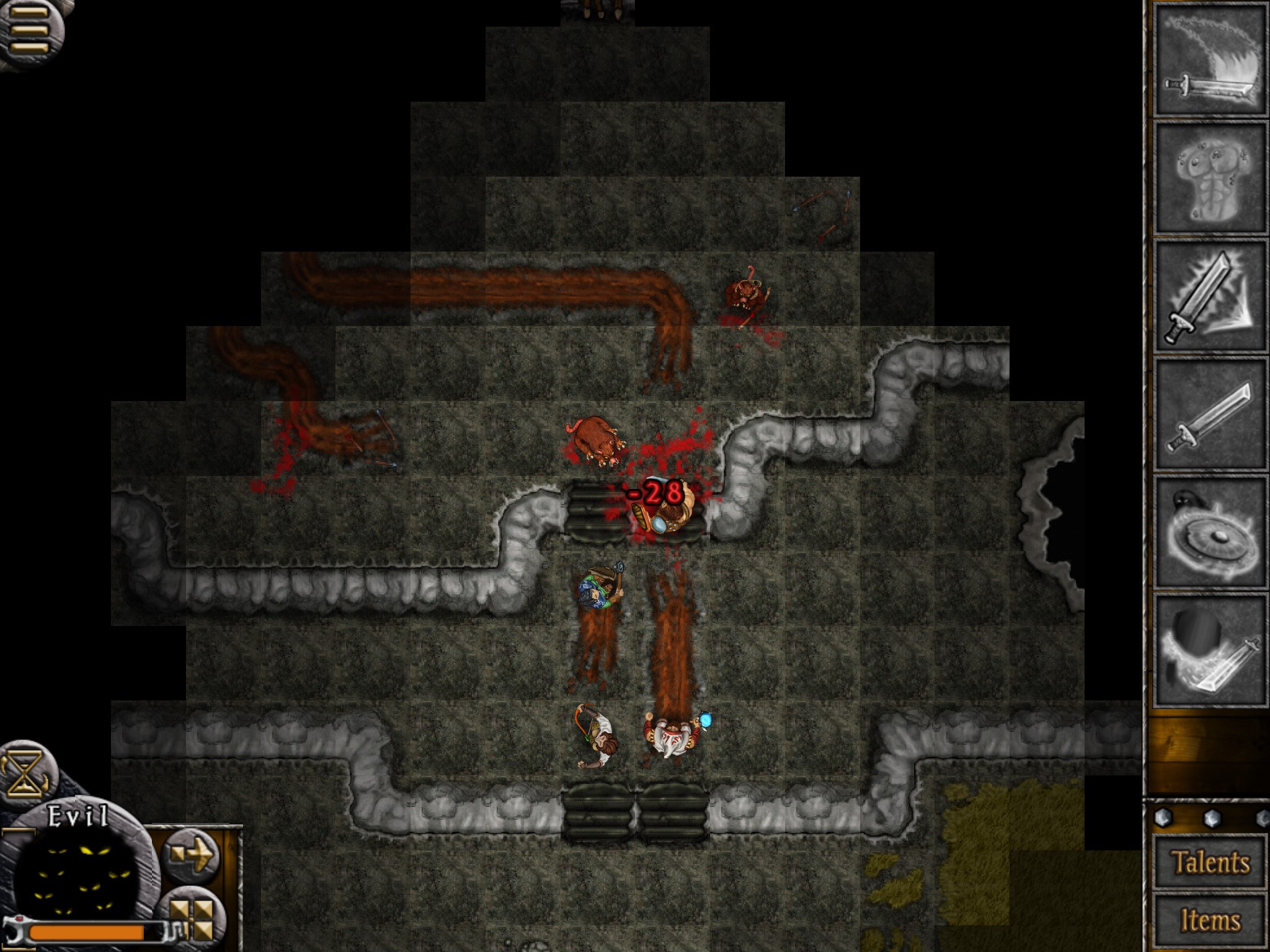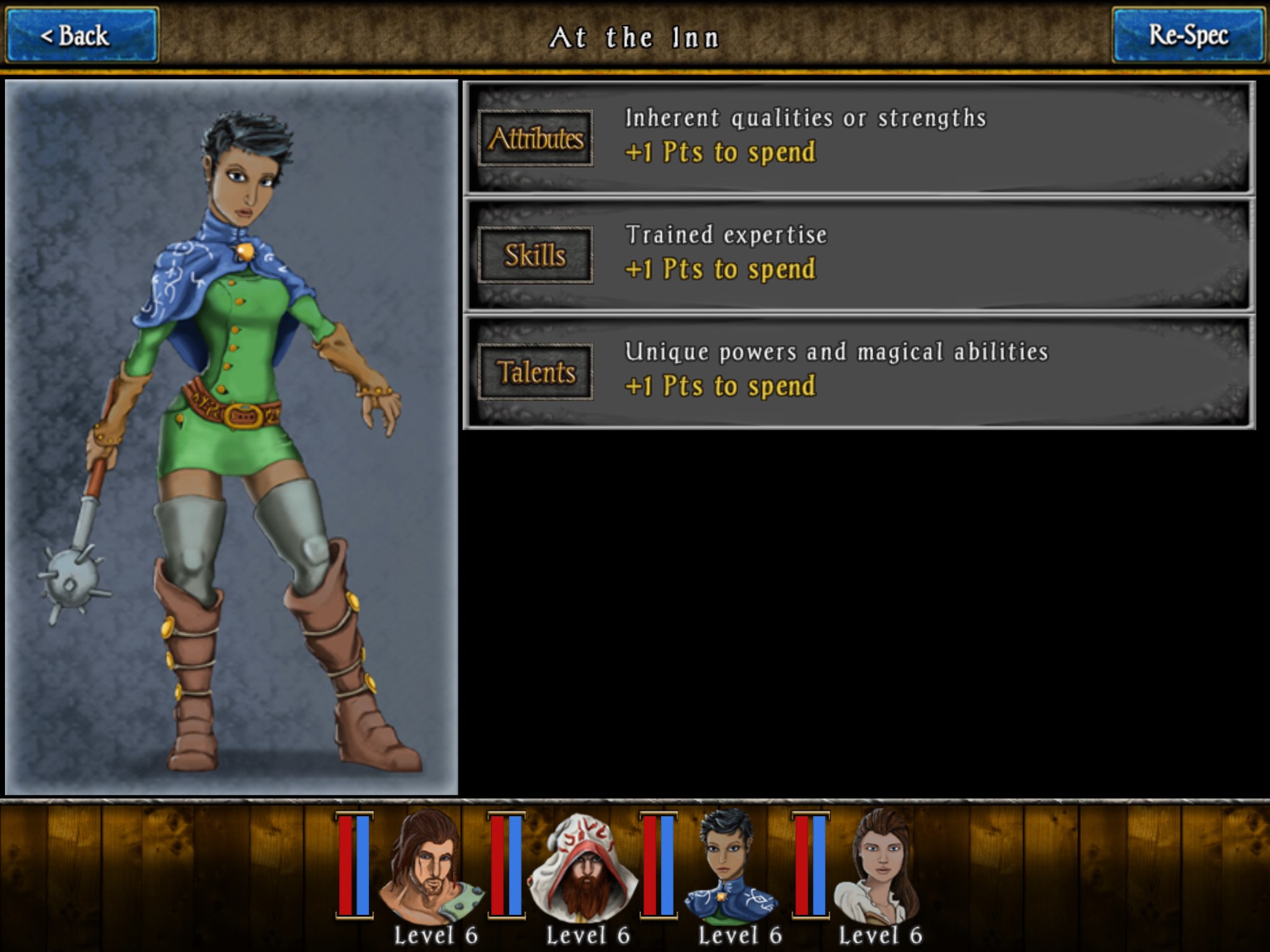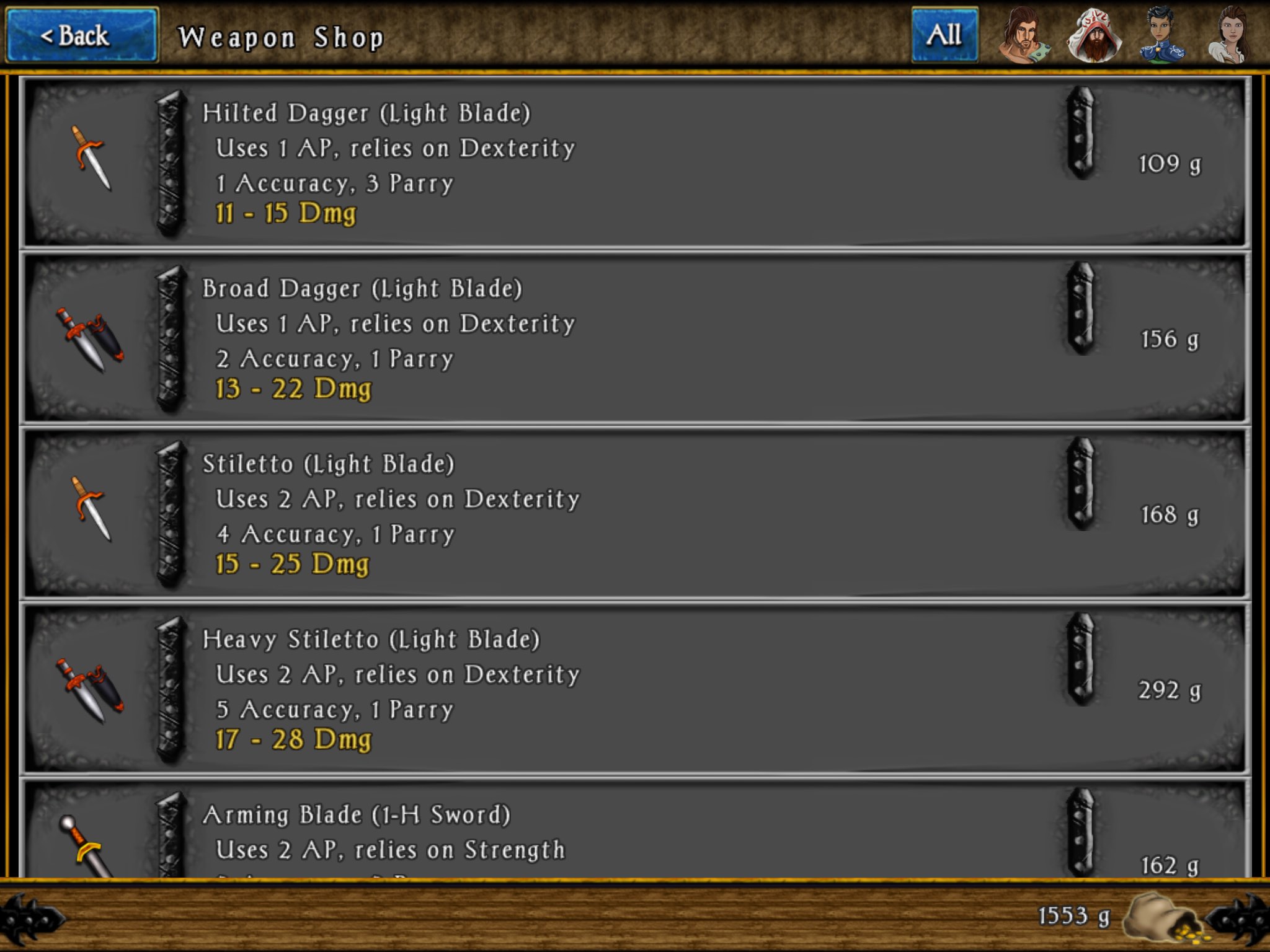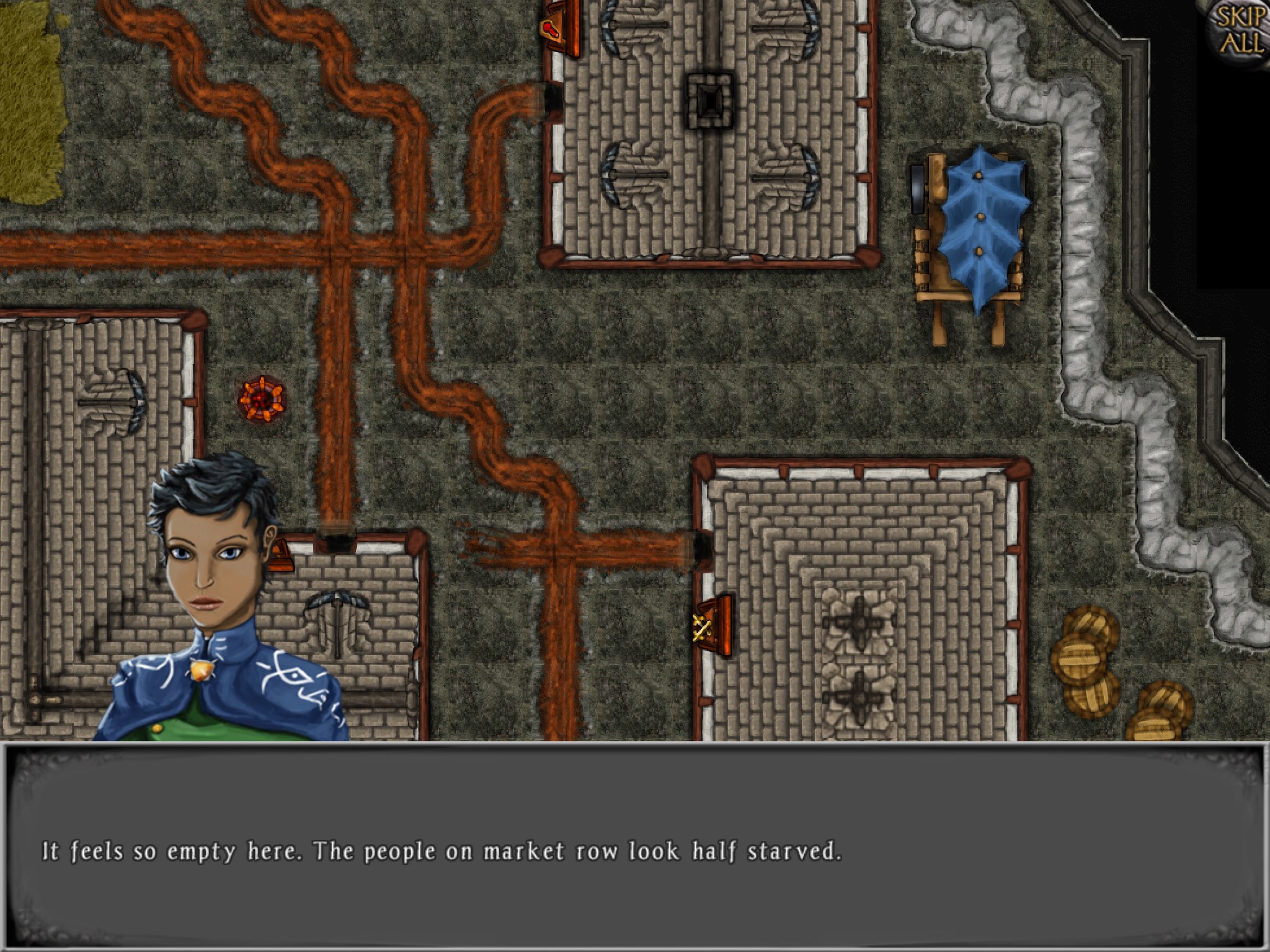 Hello, gentle readers, and welcome to the RPG Reload, the weekly feature where we all gain experience to become something better. Each week, we take a look at an RPG from the App Store’s past to see how it’s doing in the here and now. It’s an opportunity to revisit old favorites, reflect on how they fit into the greater picture, or simply to take a deeper dive than our reviews typically allow. I try to present a balanced plate as we roll through the weeks, but if you feel like I’m missing something important, don’t hesitate, suggest…suggestitate? Look, I didn’t think that through very well, but there’s no going back now. Anyway, you can leave a suggestion by commenting below, posting in the Official RPG Reload Club thread in the forums, or by tweeting me at @RPGReload. The schedule is already locked in for the next few months, but suggested games will be added to the master list, and provided I eat well and do my daily exercises, I will get to them eventually.
Hello, gentle readers, and welcome to the RPG Reload, the weekly feature where we all gain experience to become something better. Each week, we take a look at an RPG from the App Store’s past to see how it’s doing in the here and now. It’s an opportunity to revisit old favorites, reflect on how they fit into the greater picture, or simply to take a deeper dive than our reviews typically allow. I try to present a balanced plate as we roll through the weeks, but if you feel like I’m missing something important, don’t hesitate, suggest…suggestitate? Look, I didn’t think that through very well, but there’s no going back now. Anyway, you can leave a suggestion by commenting below, posting in the Official RPG Reload Club thread in the forums, or by tweeting me at @RPGReload. The schedule is already locked in for the next few months, but suggested games will be added to the master list, and provided I eat well and do my daily exercises, I will get to them eventually.
The unusual nature of the iOS market and supporting technology have resulted in a number of shake-ups in how games are built, delivered, and supported. There are countless games out there that have received frequent updates and additional content for in some cases years. Yet for as much as this is a relatively common practice in iOS gaming these days, we don’t run into too many games in the RPG Reload that have been significantly improved post-launch. Oh, maybe a patch here and a bit of expansion content there, but on-going support for the sort of done-in-one premium single-player adventures just doesn’t seem to be viable or desirable for many developers. As such, the games we typically cover in this column are usually in a similar state to how they launched, or in worse shape due to not keeping pace with new iOS versions or new hardware.

It was just about two years ago when I wrote the review of Heroes Of Steel (Free), an odd strategy RPG from the Trese Brothers. I gave it a middling score and found it to have just about as many weak points as strong ones. I stand by that review in as much as I feel it was accurate for the launch version of the game, which came out just before the end of 2013. Since then, the game has had so many updates that you can’t even see half of them in its App Store version history, and the results of those updates have been significant. So significant, in fact, that my original review might as well be reviewing something that doesn’t exist. This is the kind of post-release service the Trese Brothers are well-known for, particularly in the Android market. Seeing mentions of Heroes Of Steel pile up as I compiled my weekly Update Mondays article had me curious about what the game was like these days, and wouldn’t you know it? I just happened to have another weekly article I could use to explore the answer to those musings.
As I usually like to, I got in touch with the Trese Brothers to ask some questions about the game’s development. With this week being what it is, they haven’t been able to get back to me in time for this article, but I’ll be sharing those insights with you once they do in a separate piece. That means it’s up to old Shaun to use his cunning and tricks to try to paint the history of Heroes Of Steel on his own for the time being.
You can probably guess from the name, but just in case, Trese Brothers Games is a small studio founded by two brothers, Cory and Andrew Trese. A third Trese brother, Martin, also makes contributions to their games as an artist. Growing up, the brothers enjoyed both playing and designing traditional strategy and pen-and-paper role-playing games. Their first few games, initially released only on Android starting in 2010, were spins on well-known science-fiction titles like Elite, Space Hulk, and Shadowrun. Of those three, only Star Traders (Free) made it to iOS, releasing in December of 2012. As their engine was designed specifically for Android devices, they had to rebuild Star Traders almost from scratch to get it onto iOS. For their next game, they would go with an engine that could be used cross-platform more easily.

Like many developers, the Trese Brothers had a big dream project in mind that would probably require more resources than they could realistically muster. In this case, it was Secrets Of Steel, an RPG adventure that would take place in a massive, dynamic world inspired by the pen-and-paper games the brothers had created when they were younger. Knowing that the scope of the project was quite large, the brothers thought it might be best to create a prologue game that would introduce players to the setting. That prologue would eventually become Heroes Of Steel. It was initially conceived as a multi-character, turn-based roguelike, but ended up being something of a cross between a traditional computer RPG and a turn-based tactics game.
Between the increased scope and the desire to bring it to iOS along with Android, the Trese Brothers needed a little extra funding to make the game the way they envisioned. Like many developers in the last few years, they turned to Kickstarter, where in February of 2013 they were able to raise not only the initial $12,000 they needed to make the initial version of the game, but also the stretch goal at $20,000 which covered the costs of going cross-platform. Unlike many other Kickstarter projects, the Trese Brothers were able to deliver their game quite quickly, with the Android launch coming on December 9th of 2013 and the iOS release coming a couple of weeks later.
The initial game launched with the free prologue of the game available in full, and the first act of the first episode available as IAP. Since then, the developers have been piling on content and fixes, and the end of the game is almost within sight. The full game is composed of the prologue and four very large episodes, and only the last couple of parts of the fourth have yet to be added. There is a sequel planned, of course, and another after that, as fantasy things always come best in threes. In addition to the free version where the episodes are available as piecemeal purchases, a paid Elite version with all of them included was released several months later. And yes, the Trese Brothers update both versions dutifully, so there are no worries about either one being left behind.

That all adds up to a tremendous amount of content. Even the free prologue is good for a few hours of entertainment, and each new episode brought between 20 and 30 new dungeons with it, along with new items, monsters, story, and more. Regular readers know I keep a fairly zippy pace with my playthroughs of RPGs to try to have them finished for each Reload, but it simply wasn’t possible to do everything there is to do in Heroes Of Steel with only a week or so of playing. It wasn’t for lack of playing, either. While I found my original playthrough of the launch version of the game to be kind of a slog, the latest version of the game had me keeping my iPad by my side like some sort of security blanket just so I could squeeze in more time with it. I think the game still has an uneven pace to it, and the prologue might not be putting its best foot forward, but once it starts to unfold, it’s really something.
I suppose I haven’t really talked about what the game is, however. Heroes Of Steel is in some ways a throwback to classic computer RPGs like Ultima. You’re navigating a huge, underground world littered with dungeons and the occasional town. At first, it’s very linear, with you having to direct your characters through a prison escape, but it soon opens up and offers you more choice about how you want to prioritize your objectives and where you’d like to go next. There are treasures and side quests you can find by going off the beaten path, and they’re worth seeking out if you want to get a leg up on your enemies, but not mandatory. Otherwise, you can simply head from one objective to the next, advancing the story, leveling up your characters, and buying or discovering new gear.
When it’s time to battle, the gameplay system used is very similar to a traditional turn-based strategy RPG. It’s not terribly different from something like Fire Emblem, Final Fantasy Tactics, or even SSI’s old Goldbox RPGs. Each turn, your characters have a set number of action points they can use to move or activate an ability of some sort. Those abilities run the gamut from basic attacks to powerful offensive magic to disarming traps. You’ll also need to keep an eye on your MP, since just about any ability apart from your basic attacks will consume a portion. Once you’ve moved all of your characters, the enemy gets to take their turn. Generally, you’ll win if you wipe out all of your foes. By contrast, if even one of your characters falls in battle, you’re finished.

As strategy RPGs go, that’s all basic nuts and bolts. There are two things that separate Heroes Of Steel‘s combat from the norm, as I see it. First, since battles occur in the location that you stumble on the enemies, every battlefield is a little bit different. Some of them are less than ideal to maneuver in, while others might throw lots of enemies at you with precious little cover. You’ll rarely run into the same kind of terrain twice, and that kind of variety is pretty rare in the genre. The other interesting element comes from its marriage to a more traditional RPG structure. Unlike many other SRPGs, your party won’t be instantly healed after each battle. You need to manage your resources not just within each battle, but in the context of a larger dungeon where you don’t necessarily know when you’ll be able to rest your party next. It’s easy to go hog wild when your MP is full, but as it starts to dwindle down and you aren’t sure where the next camp is, the tension can get pretty thick. Of course, you can always just stock and use a bunch of MP potions instead of sitting on them like I tend to.
The battles are where Heroes Of Steel feels at its most comfortable. The exploration has come a long way since I wrote that review, however. From a control and UI standpoint, it’s considerably easier to get around and do what you need to in a sensible fashion. A lot of the improvement comes simply from the maturing design sense as the game progresses. This was the first time the Trese Brothers made a game quite like this, and you can see their skills improve significantly with each new content drop. As much as the exploration has improved, though, it’s still sort of a victim of the combat. While I think the battles are the best part of the game, they’re also quite frequent, as they are in many RPGs. Like many SRPGs, said battles take a little while to resolve, which is also fine from the combat’s point of view. Ultimately, these pluses for the combat hurt the exploration side somewhat, since it’s hard to get fully into digging around a dungeon when you’re running into a lot of lengthy battles. I’m not sure if this is reconcilable without one side or the other suffering.
As is often the case with games like Heroes Of Steel, the farther into the game you get, the more interesting battles become. Unless you purchase additional characters via IAP, you’re stuck with the same four characters as any other player. Even if you do purchase all of the additional characters, that only gives you one alternative for each slot. Yet even within these limitations, most players are likely going to end up with very different team compositions as early as the end of the first episode or so. When your character levels up, they’ll earn precious points that can be spent on improving their various stats and abilities. You will not be able to power up everything, so you have to decide which skills and traits are most important to your team. This set-up allows for considerable variation even with only a handful of characters who are essentially locked into particular job classes.

I haven’t even touched much on the story. Like many games where the inspiration comes from worlds built in the developer’s youth, it’s very detailed, and sometimes revels in those details too much. Particularly in the beginning, it’s a little heavy on world-building and maybe a touch light on character-building, but like the rest of the game, it evens out substantially as things trundle along. While your characters initially seem like dull cookie-cutters, they eventually start to show quirks and flaws that go against their type. I’m not going to hold the story and characters up as a shining example of the genre, but it’s encouraging how much it improves after a really clunky opening. Even getting to the first town helps things, simply because you get to meet some NPCs who aren’t nefariously twirling their mustaches.
This is normally the part of the article where I outline the updates to the app, but that’s simply not going to be possible here. In addition to adding a wealth of content, the Trese Brothers have made numerous tweaks to balancing, abilities, enemies, and more. Moreover, I can guarantee that they will continue to do so. I’m fairly confident that this is one developer whose apps we don’t need to worry about each September, as if anything breaks, they’ll likely have it fixed by the next week. Though I understand the realities, economic and otherwise, of why more developers don’t do this, it’s awfully nice to see such fine service, and from a rather small team, at that. I do have to wonder at what point they reach their limits, though. Keeping up constant updates on so many games can’t be easy, especially since they’re still releasing new ones. Well, we’ll eat that sandwich when we come to it, I guess.
If nothing else, the dedication of the developers behind Heroes Of Steel shows just how far a game can come through continuous development. In past times, this all happened behind the scenes, usually before the game launched, away from the eyes of the regular players. While I think it’s not optimal to release a game too early, the economics of indie development in this genre mean that it sometimes has to happen. Rather than lament that, I think it’s a helpful reminder that every good or great game probably didn’t start that way. They’re all rough to start, and if fortune smiles the right way and everyone involved works hard, they might get to reach their potential. It might have taken a while, but I think Heroes Of Steel has made it. It’s definitely worth checking out in its current form.

That’s just my take on Heroes Of Steel, though. What do you all think? Please let me know by commenting below, posting in the Official RPG Reload Club thread, or by tweeting me at @RPGReload. In addition, Eric, Andy, and I will be recording the latest episode of the RPG Reload Podcast this weekend, so if you have any questions you’d like us to answer, please send them to [email protected]. As for me, I’ll be back next week with the next installment in our monthly History Of Handheld RPGs series. Pack your AA batteries, because we’re going to need them! Thanks for reading!
Next Week’s Reload: The History Of Handheld RPGs, Part Four